Abstract
A bacterium capable of utilizing high concentrations of acetonitrile as the sole source of carbon and nitrogen was isolated from soil and identified as Pseudomonas putida. This bacterium could also utilize butyronitrile, glutaronitrile, isobutyronitrile, methacrylonitrile, propionitrile, succinonitrile, valeronitrile, and some of their corresponding amides, such as acetamide, butyramide, isobutyramide, methacrylamide, propionamide, and succinamide as growth substrates. Acetonitrile-grown cells oxidized acetonitrile with a Km of 40.61 mM. Mass balance studies with [14C]acetonitrile indicated that nearly 66% of carbon of acetonitrile was released as 14CO2 and 14% was associated with the biomass. Metabolites of acetonitrile in the culture medium were acetic acid and ammonia. The acetate formed in the early stages of growth completely disappeared in the later stages. Cell extracts of acetonitrile-grown cells contained activities corresponding to nitrile hydratase and amidase, which mediate the breakdown of actonitrile into acetic acid and ammonia. Both enzymes were intracellular and inducible and hydrolyzed a wide range of substrates. The specific activity of amidase was at least 150-fold higher than the activity of the enzyme nitrile hydratase.
Full text
PDF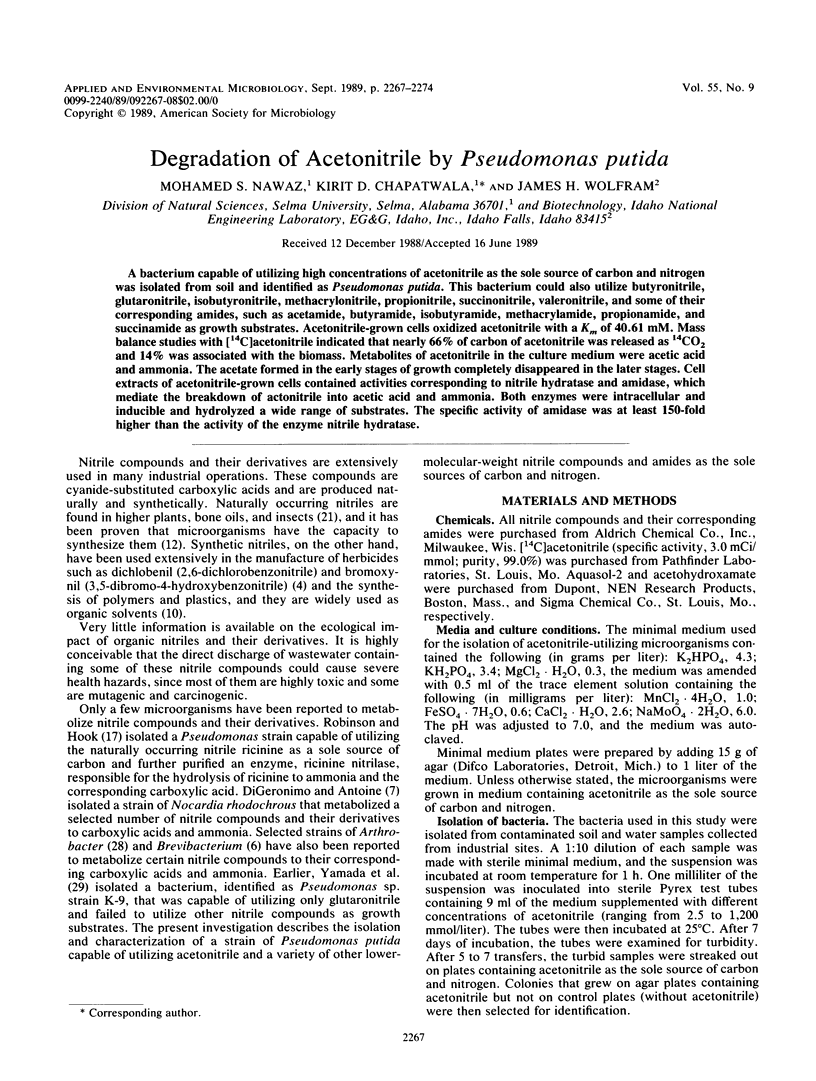
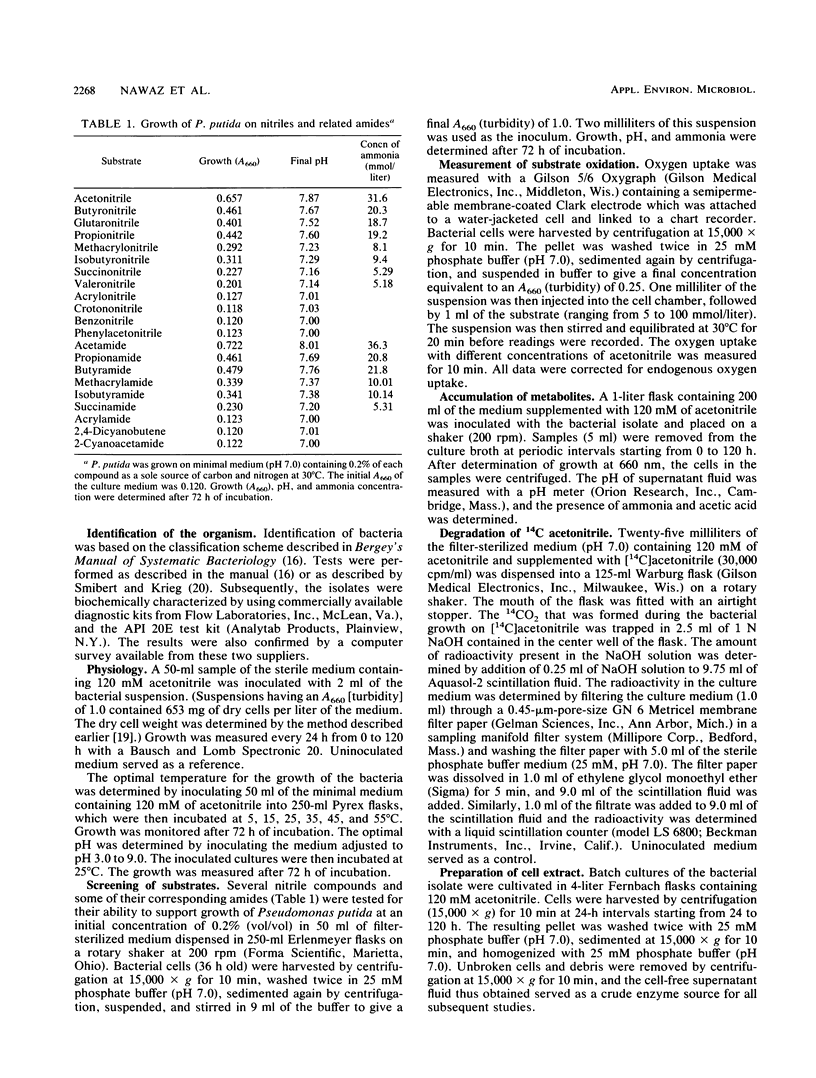
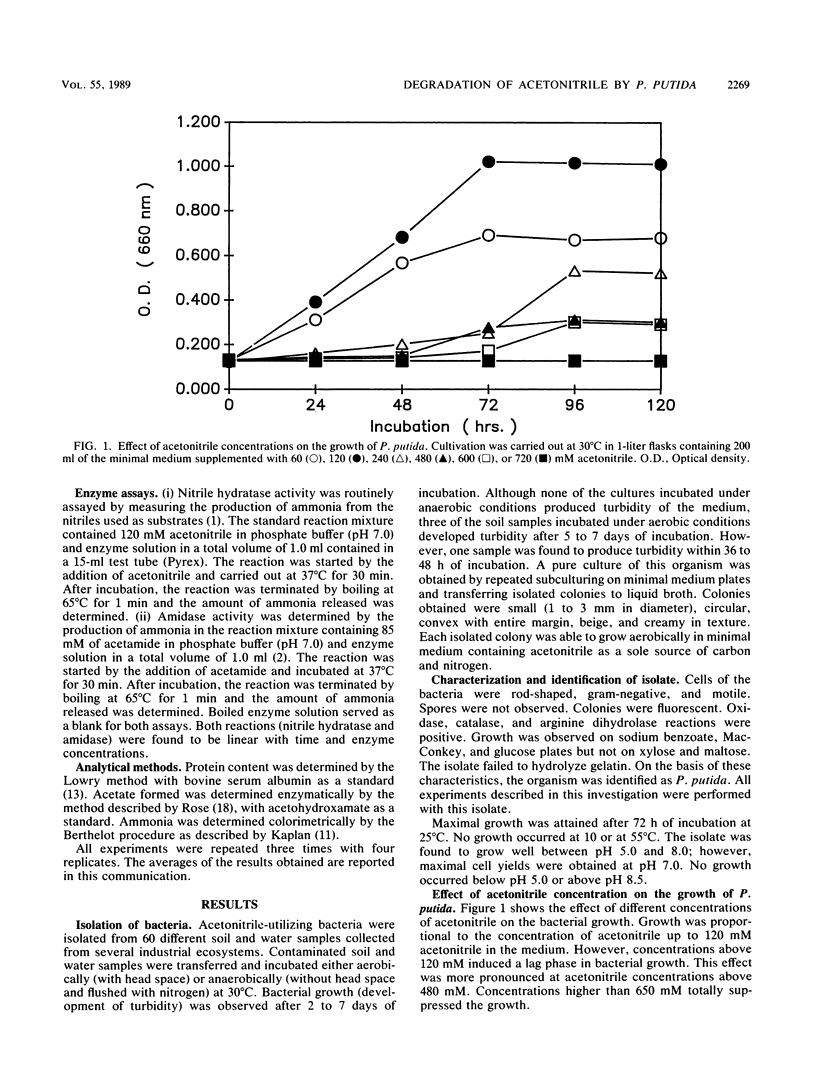
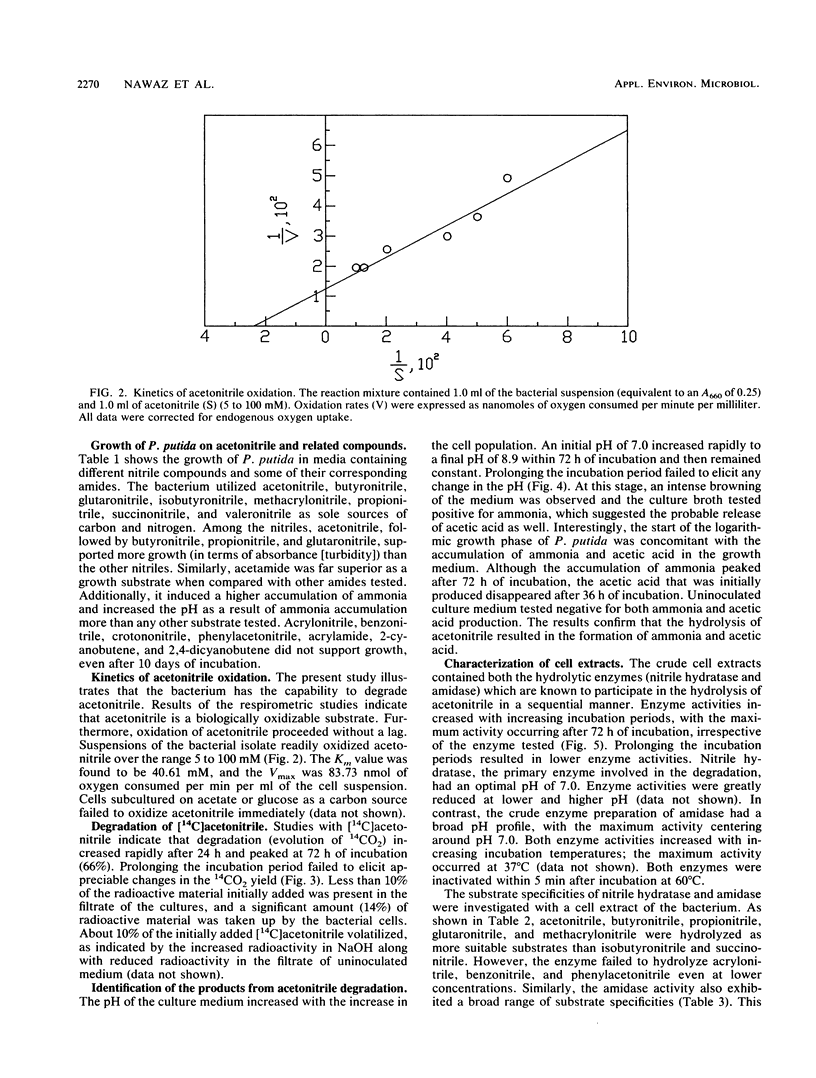
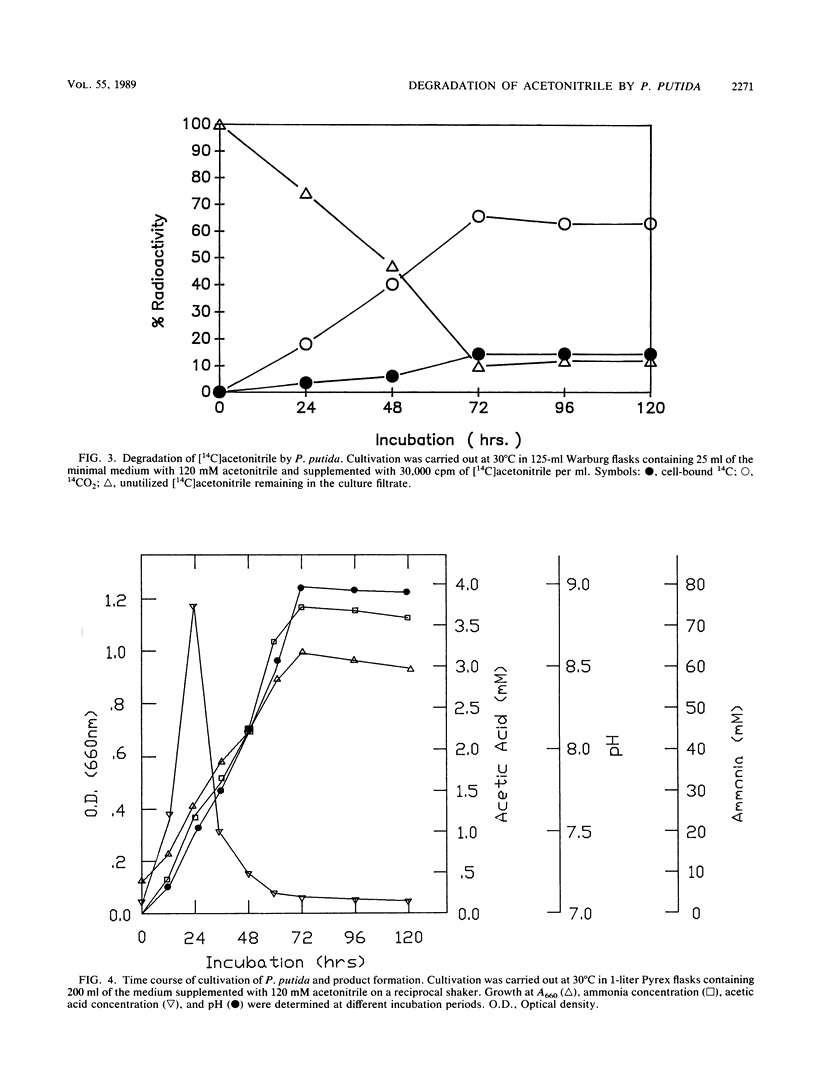
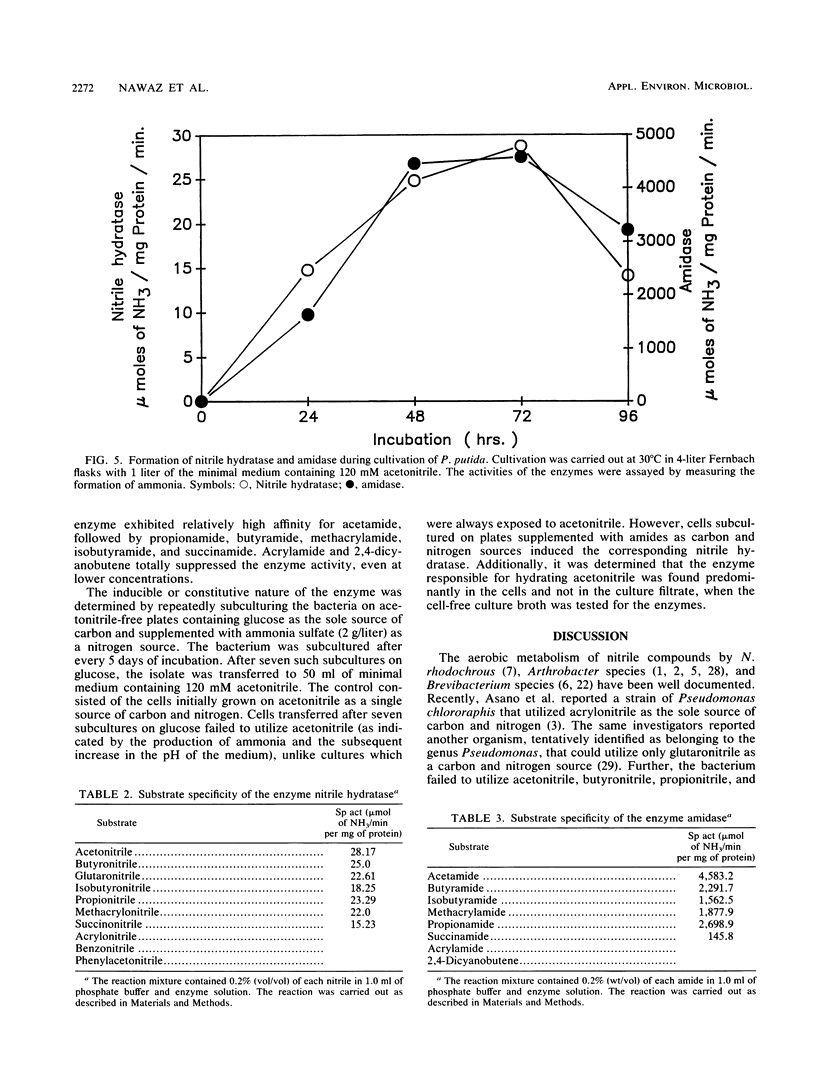
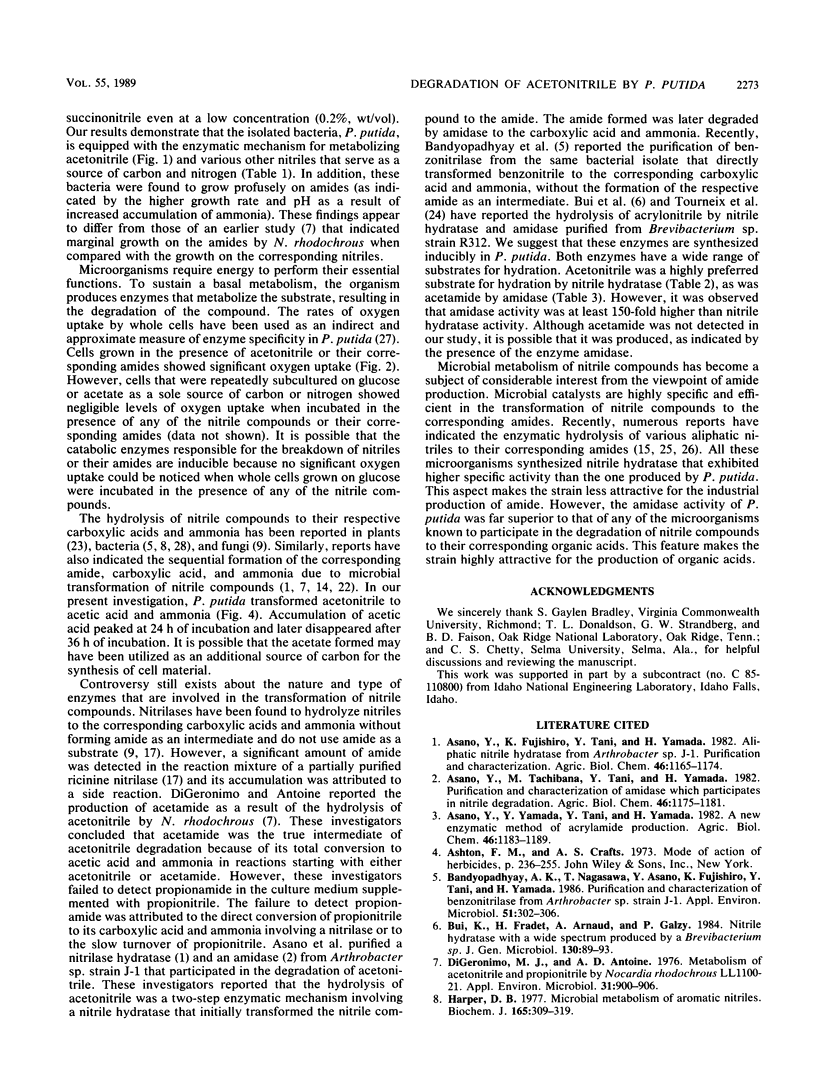
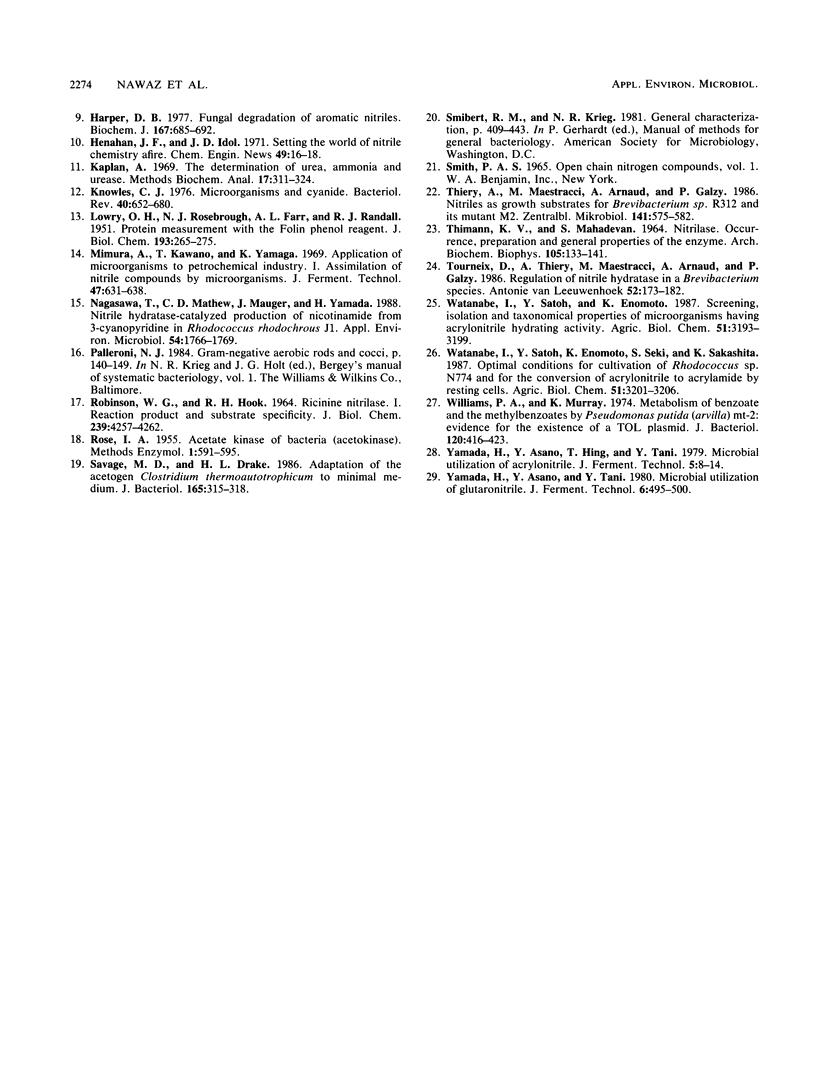
Selected References
These references are in PubMed. This may not be the complete list of references from this article.
- Bandyopadhyay A. K., Nagasawa T., Asano Y., Fujishiro K., Tani Y., Yamada H. Purification and Characterization of Benzonitrilases from Arthrobacter sp. Strain J-1. Appl Environ Microbiol. 1986 Feb;51(2):302–306. doi: 10.1128/aem.51.2.302-306.1986. [DOI] [PMC free article] [PubMed] [Google Scholar]
- DiGeronimo M. J., Antoine A. D. Metabolism of acetonitrile and propionitrile by Nocardia rhodochrous LL100-21. Appl Environ Microbiol. 1976 Jun;31(6):900–906. doi: 10.1128/aem.31.6.900-906.1976. [DOI] [PMC free article] [PubMed] [Google Scholar]
- Harper D. B. Fungal degradation of aromatic nitriles. Enzymology of C-N cleavage by Fusarium solani. Biochem J. 1977 Dec 1;167(3):685–692. doi: 10.1042/bj1670685. [DOI] [PMC free article] [PubMed] [Google Scholar]
- Harper D. B. Microbial metabolism of aromatic nitriles. Enzymology of C-N cleavage by Nocardia sp. (Rhodochrous group) N.C.I.B. 11216. Biochem J. 1977 Aug 1;165(2):309–319. doi: 10.1042/bj1650309. [DOI] [PMC free article] [PubMed] [Google Scholar]
- Kaplan A. The determination of urea, ammonia, and urease. Methods Biochem Anal. 1969;17:311–324. doi: 10.1002/9780470110355.ch7. [DOI] [PubMed] [Google Scholar]
- Knowles C. J. Microorganisms and cyanide. Bacteriol Rev. 1976 Sep;40(3):652–680. doi: 10.1128/br.40.3.652-680.1976. [DOI] [PMC free article] [PubMed] [Google Scholar]
- LOWRY O. H., ROSEBROUGH N. J., FARR A. L., RANDALL R. J. Protein measurement with the Folin phenol reagent. J Biol Chem. 1951 Nov;193(1):265–275. [PubMed] [Google Scholar]
- Nagasawa T., Mathew C. D., Mauger J., Yamada H. Nitrile Hydratase-Catalyzed Production of Nicotinamide from 3-Cyanopyridine in Rhodococcus rhodochrous J1. Appl Environ Microbiol. 1988 Jul;54(7):1766–1769. doi: 10.1128/aem.54.7.1766-1769.1988. [DOI] [PMC free article] [PubMed] [Google Scholar]
- ROBINSON W. G., HOOK R. H. RICININE NITRILASE. I. REACTION PRODUCT AND SUBSTRATE SPECIFICITY. J Biol Chem. 1964 Dec;239:4257–4262. [PubMed] [Google Scholar]
- Savage M. D., Drake H. L. Adaptation of the acetogen Clostridium thermoautotrophicum to minimal medium. J Bacteriol. 1986 Jan;165(1):315–318. doi: 10.1128/jb.165.1.315-318.1986. [DOI] [PMC free article] [PubMed] [Google Scholar]
- THIMANN K. V., MAHADEVAN S. NITRILASE. I. OCCURRENCE, PREPARATION, AND GENERAL PROPERTIES OF THE ENZYME. Arch Biochem Biophys. 1964 Apr;105:133–141. doi: 10.1016/0003-9861(64)90244-9. [DOI] [PubMed] [Google Scholar]
- Tourneix D., Thiéry A., Maestracci M., Arnaud A., Galzy P. Regulation of nitrile-hydratase synthesis in a Brevibacterium species. Antonie Van Leeuwenhoek. 1986;52(2):173–182. doi: 10.1007/BF00429321. [DOI] [PubMed] [Google Scholar]
- Williams P. A., Murray K. Metabolism of benzoate and the methylbenzoates by Pseudomonas putida (arvilla) mt-2: evidence for the existence of a TOL plasmid. J Bacteriol. 1974 Oct;120(1):416–423. doi: 10.1128/jb.120.1.416-423.1974. [DOI] [PMC free article] [PubMed] [Google Scholar]


